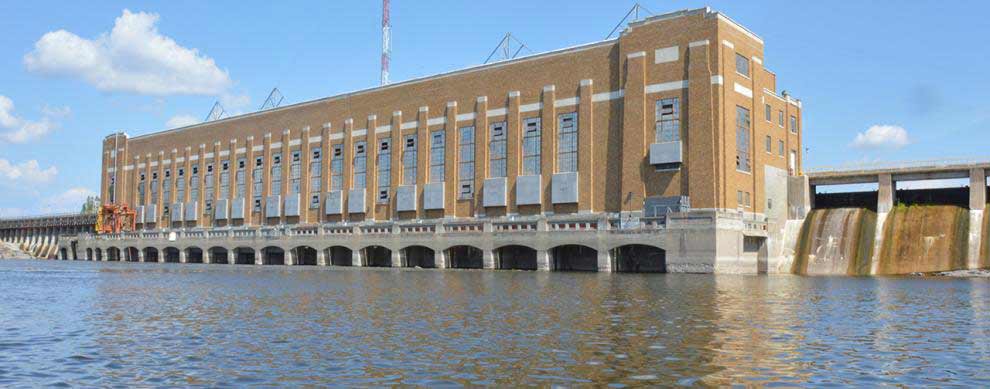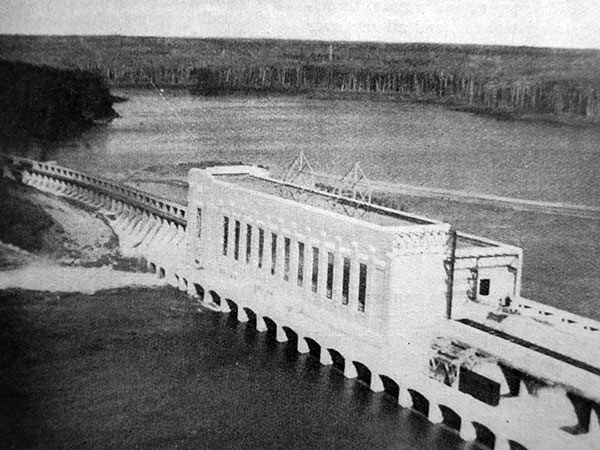A legend on the Winnipeg River: Slave Falls Generating Station
While Slave Falls Generating Station isn’t the oldest operating generating station on the Winnipeg River in Manitoba – that designation belongs to our Pointe Du Bois Generating Station which was completed in 1911 – it does have some unique characteristics that make it a memorable part of Manitoba Hydro’s generation portfolio.
The first characteristic is its name. Slave Falls is derived from an Indigenous legend of a young woman trying to escape across the river from a warrior who had enslaved her. According to the legend, in the woman’s attempts to evade her captor, the young woman was swept over the 32-foot falls to her death.

An aerial view of the generating station on the Winnipeg River.
The next of these characteristics is its atypical location. Approximately 100 miles from Winnipeg and six miles downstream from Pointe Du Bois on the Winnipeg River, the station is on an island and is accessible by private road or by boat only. Because Slave Falls is on an island, water also naturally flows in two streams around the station. This geographical feature was an asset during construction because it meant water could be diverted into one channel or the other to allow for an easier build. The island also had another welcome feature: an abundance of granite rock that helped save on construction cost and earned the island the nickname “Million Dollar Island.”

The station was completed in 1948.
Completed in 1948 with a capacity of 68 MW, Slave Falls began operating in 1931 with two vertical turbine generating units to harness the power of the Winnipeg River system. Two more units were added in 1938 and the final four units were in service by 1948. Today, the generating station has an average annual output of 499 million kWh and transmission lines carry the energy generated at Slave Falls around 100 miles southwest to near Winnipeg.
Other features of the station and its surrounding areas include a 28-bay north spillway, 15-bay south spillway (creek spillway), seven-bay north sluiceway, three-bay ice sluiceway, two-bay regulating sluiceway, concrete non-overflow dams, and earthfill dykes. These channels and mechanisms mean Slave Falls can manage flows on the Winnipeg River to generate power without need for reservoirs.

This picture, taken in 1931, shows the exterior of Slave Falls generating station at the time.
In 1970, Slave Falls underwent an automation process that allowed it to be operated by remote control from the Pointe du Bois control room, limiting the need to maintain a workforce at the somewhat inaccessible generating station.
Along with a number of Manitoba Hydro’s older generating assets, as of 2022, the 91-year-old Slave Falls generating station is undergoing concrete remediation and rejuvenation to ensure it continues to provide clean, renewable hydropower to our customers far into the future.
Learn more about Slave Falls by watching the video below.
